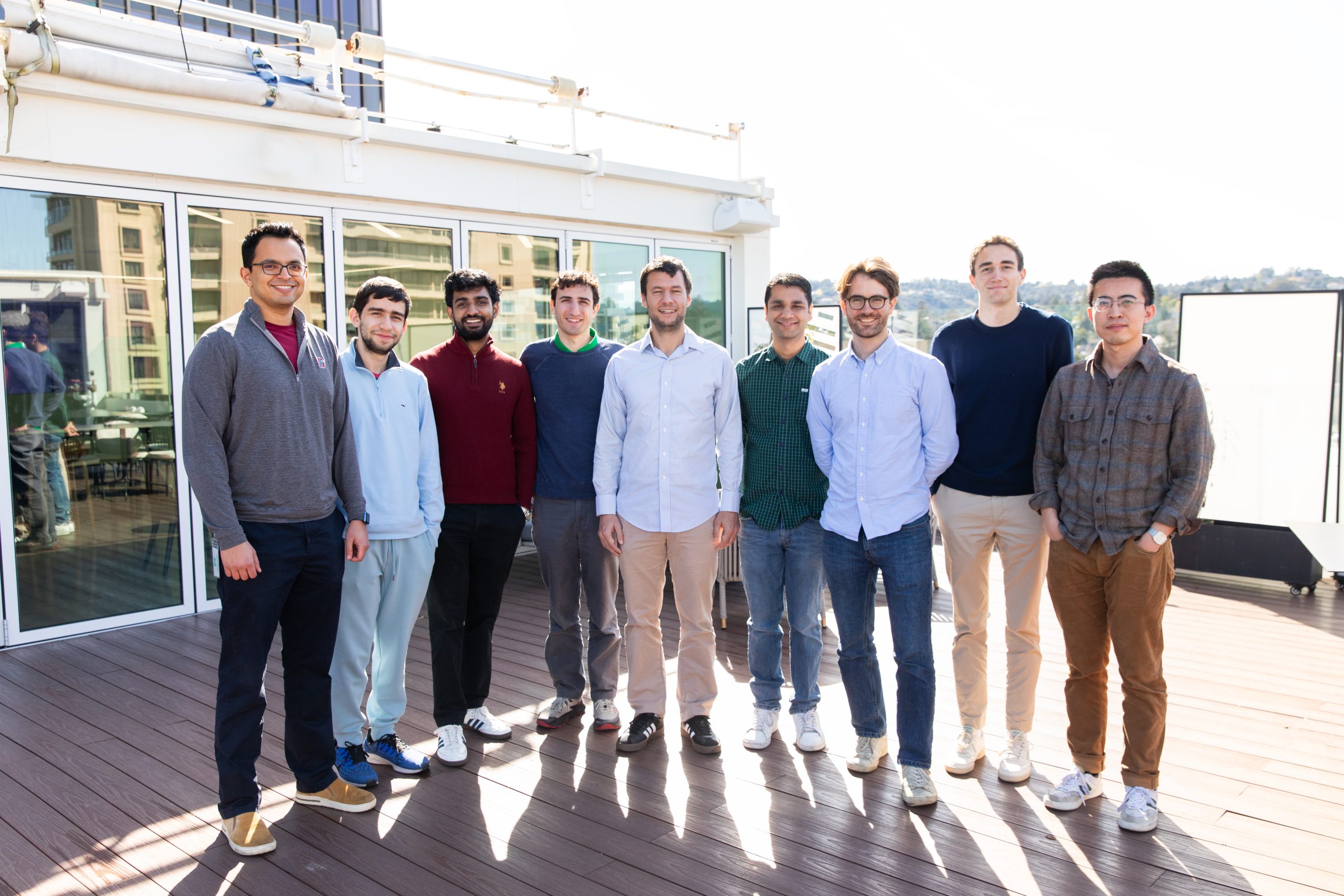
A significant collaborative endeavor has emerged in the rapidly evolving artificial intelligence landscape, as Japanese technology conglomerate SoftBank and leading AI research and deployment company OpenAI have officially launched a new joint venture in Japan. This strategic partnership, named SB OAI Japan, aims to localize and deliver OpenAI’s advanced enterprise AI solutions to businesses across the country, marking a crucial step in the global expansion of sophisticated AI capabilities. The establishment of this 50-50 joint venture underscores a growing trend in the AI sector where major investors and innovative developers are forming intertwined relationships, often with the investing entity also becoming a key customer, creating a complex ecosystem of mutual benefit and accelerated adoption.
The Genesis of SB OAI Japan
SB OAI Japan is specifically designed to cater to the unique needs of the Japanese corporate sector, offering a "packaged enterprise AI solution" that the companies are terming "Crystal intelligence." This solution is engineered to assist corporate management and operational teams in leveraging advanced AI tools to enhance productivity and management efficiency. By combining OpenAI’s cutting-edge enterprise offerings with localized implementation expertise and robust support services provided through the joint venture, SB OAI Japan seeks to bridge the gap between global AI innovation and regional business requirements. In a noteworthy move that exemplifies the integrated nature of these modern AI deals, SoftBank itself will serve as the inaugural customer for this new venture, committing to implement Crystal intelligence across its diverse portfolio of businesses. This internal adoption strategy is intended not only to validate the effectiveness of the solutions but also to generate valuable insights and best practices that can then be shared with other Japanese companies through SB OAI Japan. SoftBank has already reported extensive internal AI utilization, including the creation of 2.5 million custom ChatGPT instances for its employees, signaling a deep commitment to integrating AI into its core operations.
SoftBank’s Visionary AI Investment Strategy
SoftBank, under the leadership of its founder Masayoshi Son, has long been recognized as a formidable force in global technology investments, particularly through its Vision Fund. With a history stretching back to the early days of the internet, SoftBank has consistently sought to identify and invest in disruptive technologies. Its pivot towards AI in recent years has been particularly pronounced, aligning with Son’s long-held belief in the transformative power of information revolution. The conglomerate has committed tens of billions of dollars directly into OpenAI, a testament to its conviction in the company’s foundational AI models. Beyond direct equity investments, SoftBank is also pouring dozens of billions into building the essential AI data centers and infrastructure required to power this new era of intelligence, positioning itself not just as an investor but as a critical enabler of the AI ecosystem.
SoftBank’s strategic approach involves a multi-pronged offensive: investing in core AI technology developers like OpenAI, funding the physical infrastructure necessary for AI at scale, and then deploying these AI solutions within its own vast network and for its customers. This comprehensive strategy aims to create a self-reinforcing cycle of innovation and adoption. The decision to launch SB OAI Japan is a logical extension of this vision, enabling SoftBank to directly facilitate the practical application of advanced AI in a key regional market. Japan, with its aging population and strong emphasis on technological advancement, presents a fertile ground for AI solutions that can boost productivity and address labor challenges. SoftBank’s deep understanding of the local market, coupled with OpenAI’s technological prowess, forms a potent combination designed to accelerate AI adoption in the country.
OpenAI’s Global Expansion and Enterprise Ambitions
OpenAI has rapidly ascended to global prominence, largely propelled by the widespread adoption and public fascination with its generative AI models, most notably ChatGPT. From its origins as a non-profit research organization dedicated to ensuring artificial general intelligence benefits all of humanity, OpenAI has evolved into a leading commercial entity, albeit with a unique capped-profit structure designed to balance innovation with safety and ethical considerations. As its models have grown more sophisticated and capable, OpenAI has increasingly focused on translating its research breakthroughs into practical, enterprise-grade applications.
The enterprise market represents a massive opportunity for OpenAI, offering avenues for significant revenue generation and a broader impact on global industries. However, successful penetration of diverse international markets requires more than just groundbreaking technology; it demands localization, cultural understanding, and dedicated support infrastructure. Partnerships like the one with SoftBank in Japan are therefore critical to OpenAI’s global expansion strategy. By collaborating with established local players, OpenAI can navigate regulatory landscapes, adapt its offerings to specific linguistic and business contexts, and build trust with regional clients. This approach allows OpenAI to scale its reach efficiently, while focusing its core resources on further AI research and model development. The move also highlights the intense competition in the enterprise AI space, with tech giants and numerous startups vying for market share. Strategic alliances are becoming a standard play for maintaining competitive edge and accelerating market penetration.
The "Circular Economy" of AI Investments
The joint venture between SoftBank and OpenAI exemplifies a pattern increasingly observed in the current AI boom, often referred to as the "circular economy" of AI investments. This phenomenon describes a scenario where large investors, like SoftBank, inject substantial capital into AI development companies, such as OpenAI. Subsequently, these AI companies then leverage some of that capital to purchase services, hardware, or infrastructure from other entities, which may themselves be funded by the same initial investors or are part of a broader ecosystem cultivated by them. In some cases, as seen here, the investing entity itself becomes a primary customer for the AI solutions it helped fund, thus closing the loop of capital flow.
This circular dynamic presents both opportunities and concerns. On the one hand, it can significantly accelerate the development and adoption of AI technologies. By de-risking investments through guaranteed initial customer bases and fostering integrated ecosystems, it can ensure that groundbreaking research quickly finds real-world applications. It allows for rapid iteration and validation of products within a controlled environment, potentially speeding up market readiness. The tight integration between investor, developer, and customer can also lead to highly optimized solutions tailored to specific business needs.
However, this interconnectedness also raises questions among market analysts, with some drawing parallels to the dot-com bubble of the late 1990s. Concerns revolve around the potential for inflated valuations, where the intrinsic value of AI companies might be over-estimated due to a perceived captive market rather than broad, external validation. If a significant portion of a company’s revenue or valuation is derived from entities within the same investment circle, it can create a less transparent and potentially unsustainable growth model. Analysts caution that while these deals fuel rapid expansion and innovation, they also carry the risk of masking underlying market demand or creating a perception of success that is not fully supported by a diverse customer base. The current period of massive capital injection into AI development and associated infrastructure is being scrutinized for its long-term viability and whether these investments will yield meaningful, widespread returns on investment beyond the immediate ecosystem.
Market and Societal Implications for Japan
The launch of SB OAI Japan carries significant implications for the Japanese market and broader societal development. For Japanese businesses, the availability of localized, cutting-edge AI solutions offers a powerful tool for digital transformation. Japan faces unique demographic challenges, including a rapidly aging workforce and declining birth rates, which create persistent labor shortages. AI-driven automation and efficiency gains could prove instrumental in mitigating these pressures, allowing companies to maintain productivity and competitiveness. The cultural emphasis on precision, quality, and long-term planning within Japanese corporations makes them potentially ideal candidates for adopting sophisticated AI tools that promise incremental yet impactful improvements.
However, the integration of AI will also necessitate careful consideration of its societal impact. While AI can address labor shortages, it also raises questions about job displacement, the need for workforce reskilling, and the ethical deployment of autonomous systems. Data privacy and security, always paramount, will require robust frameworks adapted to Japanese regulations and cultural expectations. Furthermore, the success of SB OAI Japan will contribute to Japan’s broader national AI strategy, which aims to position the country as a leader in AI research, development, and application. This joint venture could serve as a catalyst for greater AI adoption across various sectors, from manufacturing and logistics to finance and healthcare, potentially enhancing Japan’s global economic standing and technological prowess.
The Road Ahead: Challenges and Opportunities
The journey for SB OAI Japan will undoubtedly present both opportunities and challenges. On the opportunity front, the strong partnership between a global AI leader and a deeply entrenched local conglomerate provides a formidable foundation for success. The initial internal deployment within SoftBank offers a real-world testbed for "Crystal intelligence," allowing for refinement and customization before broader market rollout. This iterative process, combined with SoftBank’s extensive network and market insights, positions the venture to capture a significant share of the Japanese enterprise AI market.
However, challenges loom. Successful implementation of AI solutions within diverse corporate structures requires significant change management, employee training, and robust data governance. Overcoming potential resistance to new technologies, ensuring data security in a complex regulatory environment, and continuously adapting to the rapid pace of AI innovation will be critical. The long-term success will also depend on demonstrating clear, measurable returns on investment for customer companies, moving beyond the initial hype to deliver tangible business value. Moreover, the venture will need to navigate the competitive landscape, contending with both established global tech players and emerging local AI startups. The ethical considerations surrounding AI deployment, including bias, transparency, and accountability, will also require continuous attention and proactive management to maintain trust and ensure responsible adoption.
In conclusion, the formation of SB OAI Japan represents a significant milestone in the global AI narrative, showcasing the increasingly intertwined nature of investment, development, and deployment in the sector. It highlights SoftBank’s continued commitment to AI leadership and OpenAI’s strategic approach to global enterprise expansion. While the "circular economy" model of investment sparks both excitement and scrutiny, this venture stands as a powerful testament to the accelerating drive to integrate advanced AI into the fabric of global business, with Japan emerging as a crucial frontier for this technological revolution.





